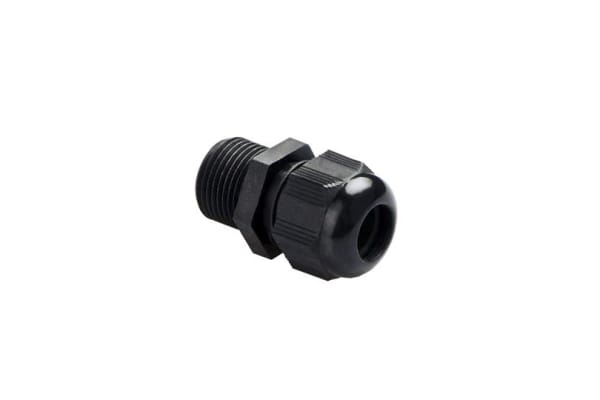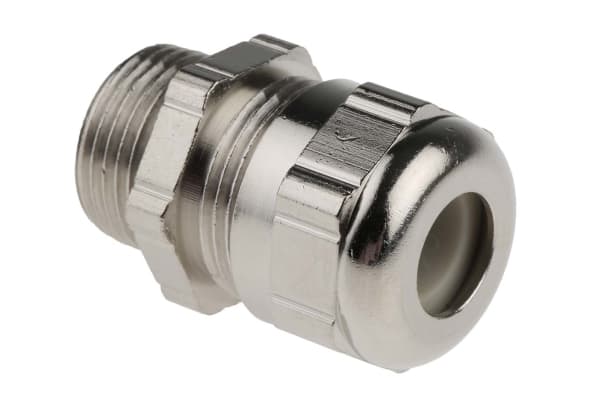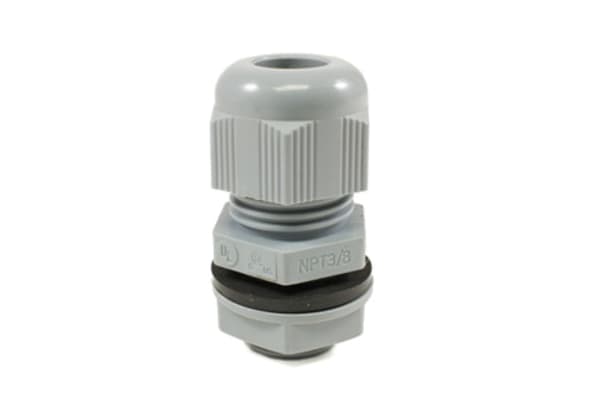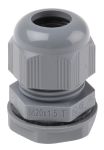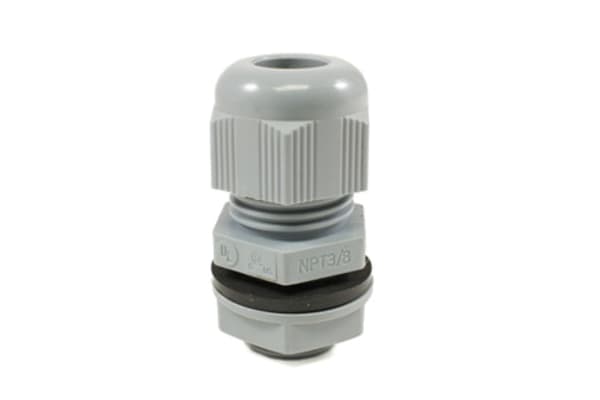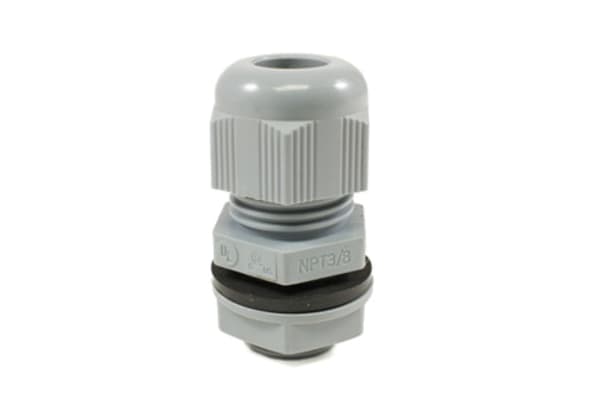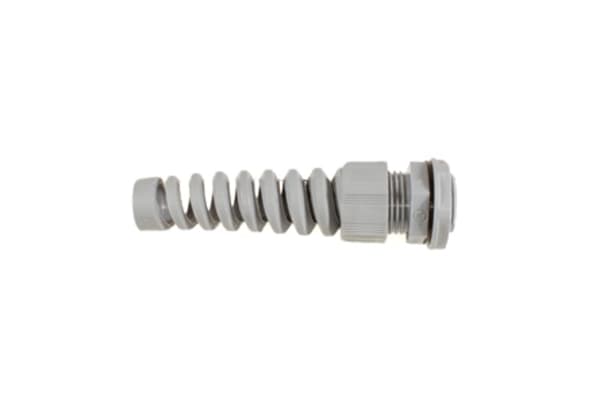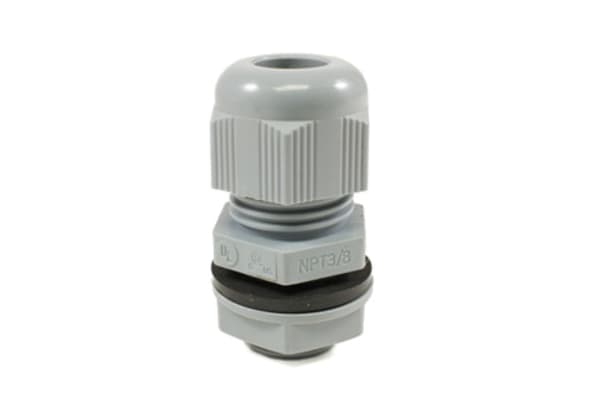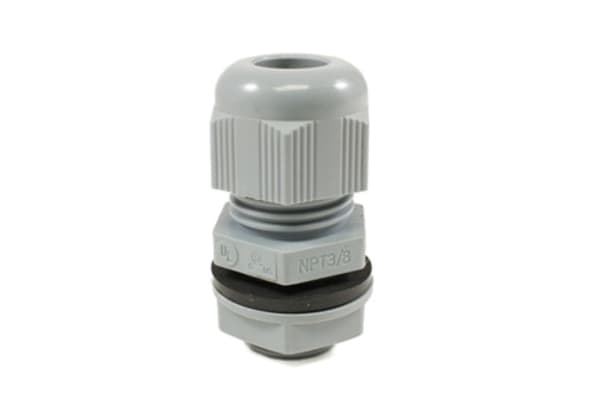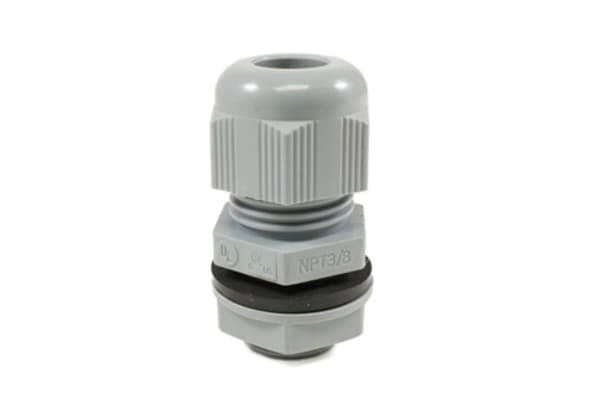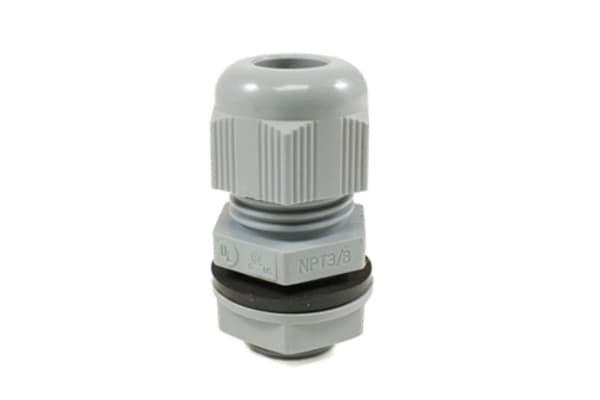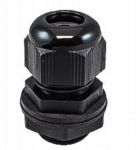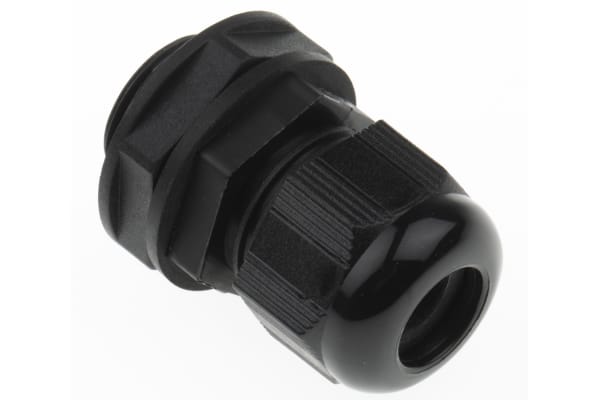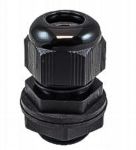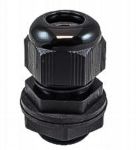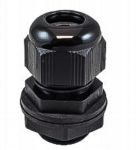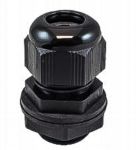Cable Glands
A Cable Gland is a device that attaches and secures the end of an electrical cable to the equipment. Cable glands seal the cable and retain it in the electrical equipment. Cable glands also perform several other functions such as earthing, grounding, insulation, bonding and act as a strain relief. Cable glands are suitable for electrical power, control, instrumentation, data and telecommunications cables. You can find out more in our complete cable glands guide.RS Components offer an extensive range of quality products from leading brands including Lapp, Hellerman Tyton, Phoenix Contact, SIB Harting and of course RS PROWhat are the different types of cable gland?There are many types of cable gland on the market today. Which one to choose depends solely on the application and environment. Cable type, material type, thread size and ingress protection are all key points to consider before buying a gland.Metal glands – are used in more demanding environments. The glands are robust and can cope with the high demands of harsher environments. Metal glands include brass, stainless steel, and nickel-plated.Plastic glands – due to their clamp and seal design, plastic glands have a wider cable entry range. They are ideal for flexible cables and provide high strain relief. Plastic glands include polyamide and nylon.Thread size – There are two main thread types on a gland. Metric or PG. Metric sizes range from M6 to M63 or PG7 to PG21. The glands can be supplied with a locknut, but locknuts are also available as a separate accessory.Ingress protection – The IP rating can also be a key point when selecting a gland. IP rated glands offer extra protection to reduce the ingress of dust and moisture. Protection classes range from IP44 to IP69K. The most popular being IP67 or IP68.If an individual cable gland is not required, we also offer a selection of kits including:Armoured kits are used for fitting glands to cables with an extra layer of protection, such as SWA cablesUnarmoured kits are for cables with one or two mutually sealed conductors.ATEX / flameproof kits are used with cables in petrochemical cable fittings.Hazardous kits are for fitting onto cables in dangerous or high-risk enclosures.
-
ABB NCG Nylon M12 Cable Gland, 6.5mm, Black
IDR183,137.94Pack (1 Pack of 10) -
ABB Nickel Plated Brass M16 Cable Gland Without Locknut, 6mm, IP68, Metallic
IDR2,138,707.10Bag (1 Bag of 5) -
ABB Nickel Plated Brass M20 Cable Gland Without Locknut, 11mm, IP68, Metallic
IDR2,179,509.31Bag (1 Bag of 5) -
Alpha Wire FIT Chloroprene Rubber (O-Ring/Seal), Polyamide M16 Cable Gland With Locknut, 10mm, IP66, IP68, Grey
IDR380,540.92Bag (1 Bag of 10) -
Alpha Wire FIT Chloroprene Rubber (O-Ring/Seal), Polyamide M20 Cable Gland With Locknut, 12mm, IP66, IP68, Grey
IDR463,089.35Bag (1 Bag of 10) -
Alpha Wire FIT Chloroprene Rubber (O-Ring/Seal), Polyamide M25 Cable Gland With Locknut, 17mm, IP66, IP68, Grey
IDR625,773.74Bag (1 Bag of 10) -
Alpha Wire FIT Chloroprene Rubber (O-Ring/Seal), Polyamide NPT 1/2in Cable Gland With Locknut, 12mm, IP66, IP68, Grey
IDR501,583.98Bag (1 Bag of 10) -
Alpha Wire FIT Chloroprene Rubber (O-Ring/Seal), Polyamide NPT 1/2in Cable Gland With Locknut, 12mm, IP66, IP68, Slate
IDR582,978.62Bag (1 Bag of 10) -
Alpha Wire FIT Chloroprene Rubber (O-Ring/Seal), Polyamide NPT 1/2in Cable Gland With Locknut, 14mm, IP66, IP68, Grey
IDR545,323.11Bag (1 Bag of 10) -
Alpha Wire FIT Chloroprene Rubber (O-Ring/Seal), Polyamide NPT 3/4in Cable Gland With Locknut, 18mm, IP66, IP68, Grey
IDR758,984.04Bag (1 Bag of 10) -
Alpha Wire FIT Chloroprene Rubber (O-Ring/Seal), Polyamide NPT 3/8in Cable Gland With Locknut, 10mm, IP66, IP68, Grey
IDR328,620.37Bag (1 Bag of 10) -
Alpha Wire FIT Chloroprene Rubber (O-Ring/Seal), Polyamide PG 13 Cable Gland With Locknut, 12mm, IP66, IP68, Slate
IDR400,889.58Bag (1 Bag of 10) -
Alpha Wire FIT Chloroprene Rubber (O-Ring/Seal), Polyamide PG 21 Cable Gland With Locknut, 18mm, IP66, IP68, Slate
IDR625,773.74Bag (1 Bag of 10) -
Alpha Wire FIT Metal PG 9 Cable Gland With Locknut, 8mm, IP66, IP68, Metallic
IDR900,480.65Bag (1 Bag of 10) -
Alpha Wire FIT PA 6 M12 x 1.5 Cable Gland With Locknut, 6.5mm, IP66, IP68, Black
IDR352,010.84Bag (1 Bag of 10) -
Alpha Wire FIT PA 6 M16 x 1.5 Cable Gland With Locknut, 10mm, IP66, IP68, Black
IDR377,499.11Bag (1 Bag of 10) -
Alpha Wire FIT PA 6 M20 x 1.5 Cable Gland With Locknut, 12mm, IP66, IP68, Black
IDR501,583.98Bag (1 Bag of 10) -
Alpha Wire FIT PA 6 M25 x 1.5 Cable Gland With Locknut, 17mm, IP66, IP68, Black
IDR726,153.47Bag (1 Bag of 10) -
Alpha Wire FIT PA 6 NPT 1/2in Cable Gland With Locknut, 12mm, IP66, IP68, Black
IDR420,189.34Bag (1 Bag of 10) -
Alpha Wire FIT PA 6 NPT 1/2in Cable Gland With Locknut, 16mm, IP66, IP68, Black
IDR558,644.14Bag (1 Bag of 10) -
Alpha Wire FIT PA 6 PG 11 Cable Gland With Locknut, 10mm, IP66, IP68, Black
IDR336,801.79Bag (1 Bag of 10) -
Alpha Wire FIT PA 6 PG 16 Cable Gland With Locknut, 14mm, IP66, IP68, Black
IDR423,231.15Bag (1 Bag of 10) -
Alpha Wire FIT PA 6 PG 21 Cable Gland With Locknut, 18mm, IP66, IP68, Black
IDR625,773.74Bag (1 Bag of 10) -
Alpha Wire FIT PA 6 PG29 Cable Gland With Locknut, 25mm, IP66, IP68, Black
IDR1,140,573.86Bag (1 Bag of 10)



